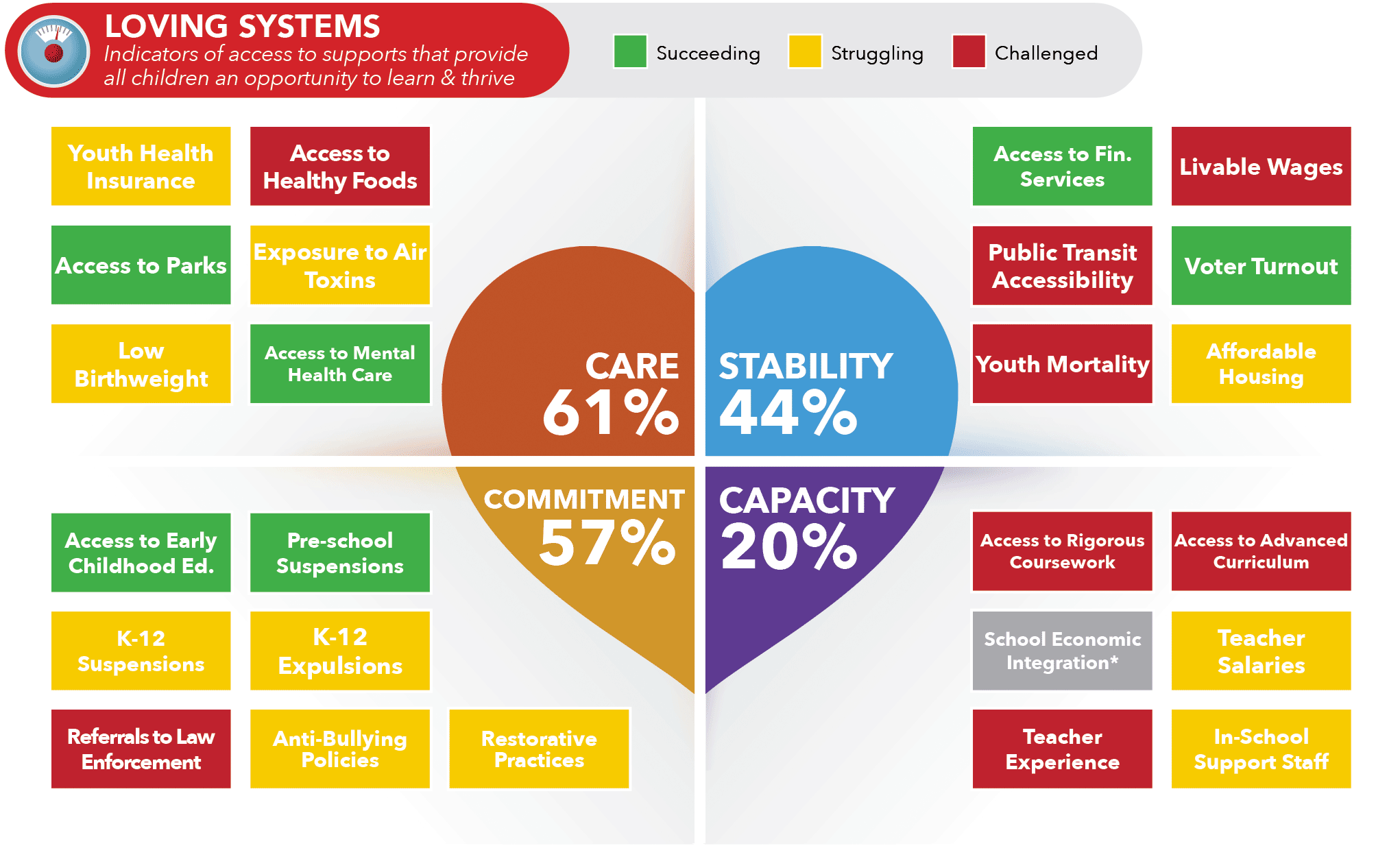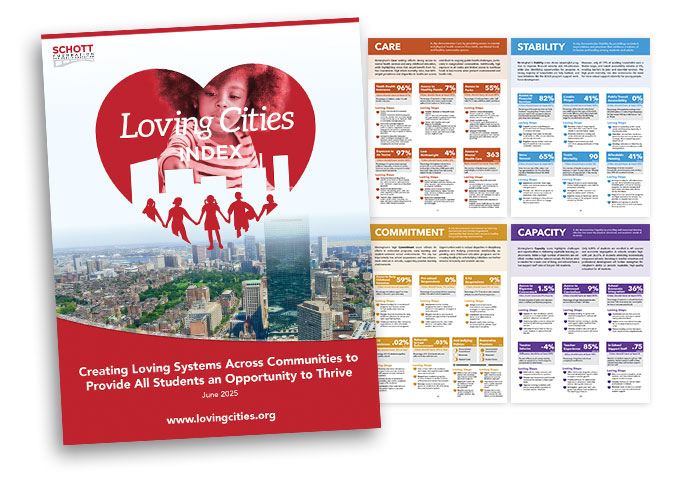Wilmington, Delaware, a small but historically significant city nestled along the Christina River, is working to build a healthier, more equitable future for its residents. Home to approximately 70,000 people, Wilmington is known for its vibrant arts scene, historic architecture, and deep civic roots.


of supports measured
As the largest city in Delaware, it plays a key role in the state’s economy and education systems. Today, Wilmington is taking steps to address systemic inequities that have long shaped residents’ access to opportunity. While the city faces persistent challenges related to income inequality, housing affordability, and youth well-being, it is also building on community strengths and advancing policy and programmatic solutions.
From investments in school mental health services to efforts that promote financial inclusion and voter participation, Wilmington is committed to shaping a more just and resilient city for the next generation. Wilmington’s Chamber scores reflect its mixed progress and the significant opportunity ahead.
Expand to read more
Wilmington’s adult educational attainment is on par with the national average, with 47% of adults holding an associate degree or higher. This is supported by local and statewide efforts to strengthen college and career readiness, including partnerships between the Delaware Department of Education and higher education institutions to expand access to dual enrollment, workforce credentials, and financial aid resources for adult learners and high school students alike.
The city’s high school graduation rate (88%) stands slightly above the national average. Wilmington has benefited from initiatives such as the Pathways to Prosperity program, which aligns high school coursework with career tracks in high-demand fields. Managed by the state in partnership with school districts and employers, the program helps students transition more effectively from school to postsecondary education or employment.
Economic conditions for young people in Wilmington are comparatively strong. Just 4.41% of youth ages 16 to 19 are not in school or working—substantially better than the national rate. Workforce programs like Year Up Wilmington are active in providing paid internships, career coaching, and skills training to keep young people engaged in school and career pathways. The unemployment rate in Wilmington is 3.23%, below the national average. This low rate reflects the city’s access to jobs and growing workforce opportunities, bolstered by services like the Wilmington Hope Commission’s Achievement Center, which offer job placement support and training to jobseekers, including returning citizens and disconnected workers.
Children living in poverty remain a key concern, with 13.47% of children under 18 living below the poverty line. To address this, Delaware has expanded early childhood tax credits and is piloting guaranteed basic income initiatives in partnership with nonprofits to support low-income families in Wilmington and surrounding areas.
Wilmington’s infant mortality rate, at 6.2 per 1,000 live births, is slightly higher than the national average. In response, the Healthy Women, Healthy Babies program, administered by the Delaware Division of Public Health, targets maternal health disparities by providing wraparound services such as prenatal care, home visiting, and nutrition counseling in high-need communities.
Wilmington Indicators

The Community Climate comprises indicators of a city’s current conditions in important areas such as education, economic stability, and public health. While these indicators do not uncover underlying supports or influences in a city, the outcomes provide a picture of a community’s well-being, economic mobility, and equitable opportunities.

*Indicator data unavailable due to universal free lunch program


